Blogs
How to Tell if You Have a Broken Toe
Broken toes can occur due to sports injuries, accidents, or even wearing improper footwear. Although it may not always be easy to detect, a broken toe should be treated properly to ensure correct healing and avoid any future complications. A broken toe may give you discomfort ranging from mild tenderness, to numbness, to very intense pain, and limited range of motion. There may be swelling at the site, and possibly even weakness and spasms in the muscles connected to the broken toe. Blood from the broken bone and fluids released into the tissues under the skin may cause partial or entire bruising of the toe and surrounding area. The toe may be twisted, bent out of its normal shape, or the bone may pierce through the skin. If you have had recent trauma to one of your toes and are experiencing any of these symptoms, schedule an appointment with a podiatrist who can diagnose a broken toe and help it heal properly.
Broken toes may cause a lot of pain and should be treated as soon as possible. If you have any concerns about your feet, contact Dr. Dean D. Hinners from Illinois. Our doctor will treat your foot and ankle needs.
What Is a Broken Toe?
A broken toe occurs when one or more of the toe bones of the foot are broken after an injury. Injuries such as stubbing your toe or dropping a heavy object on it may cause a toe fracture.
Symptoms of a Broken Toe
- Swelling
- Pain (with/without wearing shoes)
- Stiffness
- Nail Injury
Although the injured toe should be monitored daily, it is especially important to have a podiatrist look at your toe if you have severe symptoms. Some of these symptoms include worsening or new pain that is not relieved with medication, sores, redness, or open wounds near the toe.
If you have any questions, please feel free to contact one of our offices located in Metropolis and Eldorado, IL . We offer the newest diagnostic and treatment technologies for all your foot care needs.
Causes and Symptoms of Gout
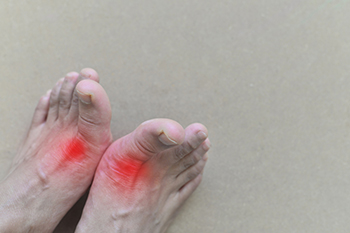
Gout is a type of arthritis characterized by sudden, severe joint pain and inflammation, typically affecting the big toe, although it can occur in other joints as well. Understanding the causes and symptoms of gout is essential for early diagnosis and effective management. Gout is primarily caused by high levels of uric acid in the blood, a condition known as hyperuricemia. Uric acid crystals can accumulate in the joints, leading to painful gout attacks. Several factors can contribute to elevated uric acid levels, including genetics, and a diet rich in purines which are found in red meat, seafood, and alcohol. Additionally, taking certain medications and obesity may lead to developing gout. The symptoms of gout often appear suddenly and include intense joint pain, swelling, redness, and warmth surrounding the affected joint. Gout attacks can be excruciating, and the pain may persist for days or weeks if left untreated. Managing gout involves lifestyle modifications, dietary changes, and medications to lower uric acid levels. Prompt medical attention and understanding the causes and symptoms are crucial for preventing and mitigating the effects of gout. If you are afflicted with gout, it is strongly suggested that you are under the care of a podiatrist who can help you to manage this condition.
Gout is a foot condition that requires certain treatment and care. If you are seeking treatment, contact Dr. Dean D. Hinners from Illinois. Our doctor will treat your foot and ankle needs.
What Is Gout?
Gout is a type of arthritis caused by a buildup of uric acid in the bloodstream. It often develops in the foot, especially the big toe area, although it can manifest in other parts of the body as well. Gout can make walking and standing very painful and is especially common in diabetics and the obese.
People typically get gout because of a poor diet. Genetic predisposition is also a factor. The children of parents who have had gout frequently have a chance of developing it themselves.
Gout can easily be identified by redness and inflammation of the big toe and the surrounding areas of the foot. Other symptoms include extreme fatigue, joint pain, and running high fevers. Sometimes corticosteroid drugs can be prescribed to treat gout, but the best way to combat this disease is to get more exercise and eat a better diet.
If you have any questions please feel free to contact one of our offices located in Metropolis and Eldorado, IL . We offer the newest diagnostic and treatment technologies for all your foot and ankle needs.
Causes of Sudden Ankle Pain Without Injury

Sudden ankle pain can strike out of nowhere, leaving you puzzled and uncomfortable. While it is easy to attribute such pain to a recent injury, there are instances when ankle pain seemingly appears out of thin air. Having an understanding the potential causes of sudden ankle pain without any obvious injury is important for proper management. One common culprit is overuse or strain. Repetitive movements, such as excessive walking or standing for extended periods, can lead to inflammation and discomfort in the ankle joint. Another factor to consider is footwear. Wearing ill-fitting shoes or high heels can strain the ankle, resulting in unexpected pain. Additionally, conditions such as gout or arthritis can manifest in the ankle joint, causing sudden and severe discomfort. Nerve compression or impingement may also be responsible for unexplained ankle pain. Additionally, changes in weather and temperature can impact joint health, potentially triggering discomfort. If you are experiencing sudden ankle pain, it is suggested that you visit a podiatrist who can determine the cause and offer appropriate treatment options.
Ankle pain can have many different causes and the pain may potentially be serious. If you have ankle pain, consult with Dr. Dean D. Hinners from Illinois. Our doctor will assess your condition and provide you with quality foot and ankle treatment.
Ankle pain is any condition that causes pain in the ankle. Due to the fact that the ankle consists of tendons, muscles, bones, and ligaments, ankle pain can come from a number of different conditions.
Causes
The most common causes of ankle pain include:
- Types of arthritis (rheumatoid, osteoarthritis, and gout)
- Ankle sprains
- Broken ankles
- Achilles tendinitis
- Achilles tendon rupture
- Stress fractures
- Tarsal tunnel syndrome
- Plantar fasciitis
Symptoms
Symptoms of ankle injury vary based upon the condition. Pain may include general pain and discomfort, swelling, aching, redness, bruising, burning or stabbing sensations, and/or loss of sensation.
Diagnosis
Due to the wide variety of potential causes of ankle pain, podiatrists will utilize a number of different methods to properly diagnose ankle pain. This can include asking for personal and family medical histories and of any recent injuries. Further diagnosis may include sensation tests, a physical examination, and potentially x-rays or other imaging tests.
Treatment
Just as the range of causes varies widely, so do treatments. Some more common treatments are rest, ice packs, keeping pressure off the foot, orthotics and braces, medication for inflammation and pain, and surgery.
If you have any questions, please feel free to contact one of our offices located in Metropolis and Eldorado, IL . We offer the newest diagnostic and treatment technologies for all your foot care needs.
All About MLS Laser Therapy
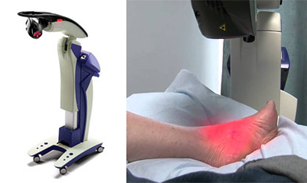 MLS laser therapy is an innovative method for treating pain. The concentration of lasers that are used, stimulate the body’s own healing process. The wavelengths may be able to replace surgery or medication, or they can help people recover quickly after surgery. This form of therapy has been known to help with arthritis, sprains, and inflammation. If you have Achilles tendonitis, plantar fasciitis, or another foot injury, MLS laser therapy could be a solution. For some patients, this therapy is the only treatment they use, claiming that a series of appointments keeps their pain manageable. For people with arthritis, this could help ease the long-term effects of the ailment. The lasers do not burn or hurt the skin, with most patients only feeling a slight warming sensation at the site of the treatment. If you have a foot or ankle condition that you believe may improve with MLS laser therapy, be sure to contact a podiatrist.
MLS laser therapy is an innovative method for treating pain. The concentration of lasers that are used, stimulate the body’s own healing process. The wavelengths may be able to replace surgery or medication, or they can help people recover quickly after surgery. This form of therapy has been known to help with arthritis, sprains, and inflammation. If you have Achilles tendonitis, plantar fasciitis, or another foot injury, MLS laser therapy could be a solution. For some patients, this therapy is the only treatment they use, claiming that a series of appointments keeps their pain manageable. For people with arthritis, this could help ease the long-term effects of the ailment. The lasers do not burn or hurt the skin, with most patients only feeling a slight warming sensation at the site of the treatment. If you have a foot or ankle condition that you believe may improve with MLS laser therapy, be sure to contact a podiatrist.
MLS Laser Therapy is a successful alternative for treating any pain you may be experiencing related to certain podiatric conditions. If you are interested in MLS Laser Therapy, consult with Dr. Dean D. Hinners from Illinois. Our doctor will assess your condition and provide you with quality foot and ankle treatment.
MLS Laser Therapy
Multiwave Locked System (MLS) Laser Therapy is a patented, FDA-cleared technology that helps relieve pain and inflammation from a number of podiatric conditions, including:
- Heel Pain
- Plantar Fasciitis
- Sports Injuries
- Wounds
- Achilles Tendonitis
- Arthritis
- Neuropathy
- Neuromas
MLS Laser Therapy is an ideal alternative to surgery and prescription medication, as it has no negative side effects and encourages accelerated healing. Among its many clinical benefits, MLS Laser Therapy also:
- Reduces swelling due to bruising or inflammation
- Blocks pain
- Reduces formation of scar tissue
- Improves nerve function
If you have any questions, please feel free to contact one of our offices located in Metropolis and Eldorado, IL . We offer the newest diagnostic and treatment technologies for all your foot care needs.
Causes and Symptoms of Morton’s Neuroma

Morton's neuroma, a painful condition affecting the feet, can develop due to a combination of factors. One primary factor is biomechanical issues within the feet, such as having flat feet or high arches. These structural variations can place excessive stress on the toe joints, leading to repeated irritation of the nerve. Tight calf muscles, which limits ankle movement, are another contributor to this condition. When the ankle's range of motion is restricted, it can result in increased pressure on the balls of the feet, further aggravating the situation. Additionally, footwear choices play a significant role in developing Morton’s neuroma. Wearing narrow, high heeled or tight fitting shoes compresses the nerves and puts pressure on the forefoot. Some patients report a persistent aching or burning sensation, frequently occurring between the third and fourth toes. This discomfort is often accompanied by sharp, shooting pains in the ball of the foot, which can extend into the toes and create additional discomfort. Some patients liken the sensation to having a foreign object such as a pebble or stone, trapped inside their shoe. Tingling and pricking sensations in the toes are also prevalent and contribute to the overall discomfort associated with Morton's neuroma. If you believe you may have Morton’s neuroma, it is suggested that you make an appointment with a podiatrist.
Morton’s neuroma is a very uncomfortable condition to live with. If you think you have Morton’s neuroma, contact Dr. Dean D. Hinners of Illinois. Our doctor will attend to all of your foot care needs and answer any of your related questions.
Morton’s Neuroma
Morton's neuroma is a painful foot condition that commonly affects the areas between the second and third or third and fourth toe, although other areas of the foot are also susceptible. Morton’s neuroma is caused by an inflamed nerve in the foot that is being squeezed and aggravated by surrounding bones.
What Increases the Chances of Having Morton’s Neuroma?
- Ill-fitting high heels or shoes that add pressure to the toe or foot
- Jogging, running or any sport that involves constant impact to the foot
- Flat feet, bunions, and any other foot deformities
Morton’s neuroma is a very treatable condition. Orthotics and shoe inserts can often be used to alleviate the pain on the forefront of the feet. In more severe cases, corticosteroids can also be prescribed. In order to figure out the best treatment for your neuroma, it’s recommended to seek the care of a podiatrist who can diagnose your condition and provide different treatment options.
If you have any questions, please feel free to contact one of our offices located in Metropolis and Eldorado, IL . We offer the newest diagnostic and treatment technologies for all your foot care needs.
Gout Pain Can Be Managed
Running With Flat Feet

Running is a pursuit that empowers both body and mind, regardless of foot arch type. Flat feet, often misunderstood, should not deter anyone from lacing up and hitting the track. There are various types of flat feet, each requiring a unique approach. Flexible flat feet involve arches that appear when one is off the foot, and rigid flat feet exhibit little to no arch, even when lifted. While some flat feet do not pose issues, others may lead to discomfort or pain during running. Wearing customized footwear with proper arch support is essential. Orthotics or insoles can aid in maintaining alignment and reducing strain. Performing strengthening exercises targeting foot muscles can enhance stability. Running with flat feet is indeed possible with the right knowledge, care, and preparation. If you have flat feet and are interested in pursuing running as a hobby, it is suggested that you are under the care of a podiatrist who can provide you with useful information.
Flatfoot is a condition many people suffer from. If you have flat feet, contact Dr. Dean D. Hinners from Illinois. Our doctor will treat your foot and ankle needs.
What Are Flat Feet?
Flatfoot is a condition in which the arch of the foot is depressed and the sole of the foot is almost completely in contact with the ground. About 20-30% of the population generally has flat feet because their arches never formed during growth.
Conditions & Problems:
Having flat feet makes it difficult to run or walk because of the stress placed on the ankles.
Alignment – The general alignment of your legs can be disrupted, because the ankles move inward which can cause major discomfort.
Knees – If you have complications with your knees, flat feet can be a contributor to arthritis in that area.
Symptoms
- Pain around the heel or arch area
- Trouble standing on the tip toe
- Swelling around the inside of the ankle
- Flat look to one or both feet
- Having your shoes feel uneven when worn
Treatment
If you are experiencing pain and stress on the foot you may weaken the posterior tibial tendon, which runs around the inside of the ankle.
If you have any questions please feel free to contact one of our offices located in Metropolis and Eldorado, IL . We offer the newest diagnostic and treatment technologies for all your foot and ankle needs.
Causes of Discomfort on the Bottom of the Foot
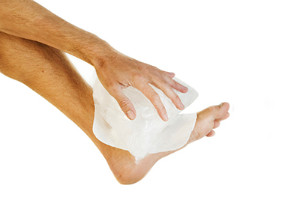
Foot pain can send ripples of discomfort through our daily activities, especially when it emanates from the bottom of the foot. This region, comprising muscles, tendons, and ligaments, is susceptible to various triggers. Plantar fasciitis, a common culprit, results from inflammation of the tissue connecting the heel to the toes. Strained arches or flat feet can lead to overuse injuries, causing discomfort along the sole of the foot. Morton's neuroma, a thickening of nerve tissue, can cause sharp pain between the toes. Excessive pressure, wearing ill-fitting footwear, or repetitive motions can contribute to this condition. Proper diagnosis by a podiatrist is essential in accurately pinpointing the cause. With tailored care and lifestyle adjustments, individuals can address the root of their discomfort. If you have pain on the bottom of your foot, it is strongly suggested that you are under the care of a podiatrist who can determine the cause and treat it accordingly.
Foot Pain
Foot pain can be extremely painful and debilitating. If you have a foot pain, consult with Dr. Dean D. Hinners from Illinois. Our doctor will assess your condition and provide you with quality foot and ankle treatment.
Causes
Foot pain is a very broad condition that could be caused by one or more ailments. The most common include:
- Bunions
- Hammertoes
- Plantar Fasciitis
- Bone Spurs
- Corns
- Tarsal Tunnel Syndrome
- Ingrown Toenails
- Arthritis (such as Gout, Rheumatoid, and Osteoarthritis)
- Flat Feet
- Injury (from stress fractures, broken toe, foot, ankle, Achilles tendon ruptures, and sprains)
- And more
Diagnosis
To figure out the cause of foot pain, podiatrists utilize several different methods. This can range from simple visual inspections and sensation tests to X-rays and MRI scans. Prior medical history, family medical history, and any recent physical traumatic events will all be taken into consideration for a proper diagnosis.
Treatment
Treatment depends upon the cause of the foot pain. Whether it is resting, staying off the foot, or having surgery; podiatrists have a number of treatment options available for foot pain.
If you have any questions, please feel free to contact one of our offices located in Metropolis and Eldorado, IL . We offer the newest diagnostic and treatment technologies for all your foot care needs.
Exploring Foot Exercises and Their Significance
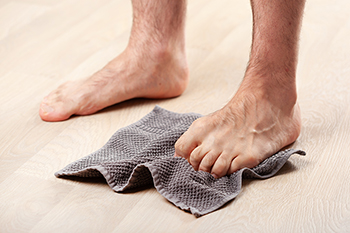
In the realm of overall well-being, foot health plays a pivotal role, and is often overlooked. Foot exercises, a powerful yet underappreciated tool, hold the potential to enhance both physical comfort and agility. These exercises come in various forms, from simple toe curls and arch stretches to more dynamic movements such as calf raises and ankle circles. Performing foot exercises can improve blood circulation, strengthen muscles, and enhance flexibility. This is successful in contributing to better balance and posture. The importance of foot exercises extends beyond the feet themselves, as they can alleviate strain on knees, hips, and lower back. It is beneficial to Incorporate foot exercises into a regular fitness regimen, which translates into a natural approach to health. If you would like to learn about additional foot exercises, it is suggested that you consult with a podiatrist who can provide you with useful tips.
Exercising your feet regularly with the proper foot wear is a great way to prevent injuries and build strength. If you have any concerns about your feet, contact Dr. Dean D. Hinners from Illinois. Our doctor can provide the care you need to keep you pain-free and on your feet.
Exercise for Your Feet
Exercise for your feet can help you gain strength, mobility and flexibility in your feet. They say that strengthening your feet can be just as rewarding as strengthening another part of the body. Your feet are very important, and we often forget about them in our daily tasks. But it is because of our feet that are we able to get going and do what we need to. For those of us fortunate enough to not have any foot problems, it is an important gesture to take care of them to ensure good health in the long run.
Some foot health exercises can include ankle pumps, tip-toeing, toe rises, lifting off the floor doing reps and sets, and flexing the toes. It is best to speak with Our doctor to determine an appropriate regimen for your needs. Everyone’s needs and bodies are different, and the activities required to maintain strength in the feet vary from individual to individual.
Once you get into a routine of doing regular exercise, you may notice a difference in your feet and how strong they may become.
If you have any questions please feel free to contact one of our offices located in Metropolis and Eldorado, IL . We offer the newest diagnostic and treatment technologies for all your foot and ankle needs.
Causes of Toenail Fungus
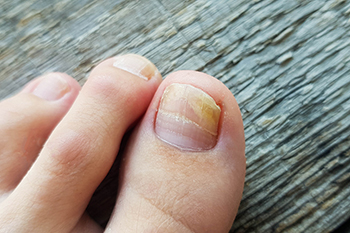
Toenail fungus, also known as onychomycosis, is a common and bothersome condition that affects millions of people worldwide. This fungal infection occurs when microscopic fungi, such as dermatophytes or yeast, penetrate the nail bed through small cuts or openings. The warm and damp environment inside closed-toe shoes provides an ideal breeding ground for the fungi to thrive. The infection often starts with a white or yellow spot under the nail and gradually spreads, causing the nail to become discolored, thickened, and brittle. Individuals with compromised immune systems, or who have diabetes or poor circulation are generally at a higher risk. Additionally, frequent exposure to moist environments, wearing tight-fitting shoes, or walking barefoot in public places may also increase the likelihood of developing toenail fungus. Early detection and proper treatment are essential in preventing the spread of the infection and can help restore healthy toenails. Toenail fungus can be treated by a podiatrist, and it is suggested that you contact this type of doctor for relief options that are correct for you.
If left untreated, toenail fungus may spread to other toenails, skin, or even fingernails. If you suspect you have toenail fungus it is important to seek treatment right away. For more information about treatment, contact Dr. Dean D. Hinners of Illinois. Our doctor can provide the care you need to keep you pain-free and on your feet.
Symptoms
- Warped or oddly shaped nails
- Yellowish nails
- Loose/separated nail
- Buildup of bits and pieces of nail fragments under the nail
- Brittle, broken, thickened nail
Treatment
If self-care strategies and over-the-counter medications does not help your fungus, your podiatrist may give you a prescription drug instead. Even if you find relief from your toenail fungus symptoms, you may experience a repeat infection in the future.
Prevention
In order to prevent getting toenail fungus in the future, you should always make sure to wash your feet with soap and water. After washing, it is important to dry your feet thoroughly especially in between the toes. When trimming your toenails, be sure to trim straight across instead of in a rounded shape. It is crucial not to cover up discolored nails with nail polish because that will prevent your nail from being able to “breathe”.
In some cases, surgical procedure may be needed to remove the toenail fungus. Consult with your podiatrist about the best treatment options for your case of toenail fungus.
If you have any questions, please feel free to contact one of our offices located in Metropolis and Eldorado, IL . We offer the newest diagnostic and treatment technologies for all your foot care needs.
More...
Are Bunions Affecting Your Everyday Life?
Possible Symptoms of Sesamoiditis
 The medical condition that is referred to as sesamoiditis develops as a result of inflamed tendons surrounding the sesamoid bones. These small bones are located under the ball of the foot, and help to move the big toe. An injury may cause the sesamoid bones and surrounding area to become damaged, and the patient may feel pain and discomfort on the sole of the foot while walking and running. Additionally, this condition may develop from wearing shoes that have inadequate room for the toes to move freely in. Mild relief may be found when the affected foot is frequently rested, and it generally helps to wear shoes that fit correctly. If you are experiencing these types of symptoms, it is strongly suggested that you schedule a consultation with a podiatrist who can properly diagnose and treat this condition.
The medical condition that is referred to as sesamoiditis develops as a result of inflamed tendons surrounding the sesamoid bones. These small bones are located under the ball of the foot, and help to move the big toe. An injury may cause the sesamoid bones and surrounding area to become damaged, and the patient may feel pain and discomfort on the sole of the foot while walking and running. Additionally, this condition may develop from wearing shoes that have inadequate room for the toes to move freely in. Mild relief may be found when the affected foot is frequently rested, and it generally helps to wear shoes that fit correctly. If you are experiencing these types of symptoms, it is strongly suggested that you schedule a consultation with a podiatrist who can properly diagnose and treat this condition.
Sesamoiditis is an unpleasant foot condition characterized by pain in the balls of the feet. If you think you’re struggling with sesamoiditis, contact Dr. Dean D. Hinners of Illinois. Our doctor will treat your condition thoroughly and effectively.
Sesamoiditis
Sesamoiditis is a condition of the foot that affects the ball of the foot. It is more common in younger people than it is in older people. It can also occur with people who have begun a new exercise program, since their bodies are adjusting to the new physical regimen. Pain may also be caused by the inflammation of tendons surrounding the bones. It is important to seek treatment in its early stages because if you ignore the pain, this condition can lead to more serious problems such as severe irritation and bone fractures.
Causes of Sesamoiditis
- Sudden increase in activity
- Increase in physically strenuous movement without a proper warm up or build up
- Foot structure: those who have smaller, bonier feet or those with a high arch may be more susceptible
Treatment for sesamoiditis is non-invasive and simple. Doctors may recommend a strict rest period where the patient forgoes most physical activity. This will help give the patient time to heal their feet through limited activity. For serious cases, it is best to speak with your doctor to determine a treatment option that will help your specific needs.
If you have any questions please feel free to contact one of our offices located in Metropolis and Eldorado, IL . We offer the newest diagnostic and treatment technologies for all your foot and ankle needs.
How to Prevent Athlete’s Foot
 The symptoms of a condition that is referred to as athlete’s foot may consist of dry, flaky and cracked skin between the toes or on the soles of the feet. It is typically caused by a fungus which thrives in warm and moist areas. These may include public swimming pools, shower room floors, or locker rooms. It is known to be extremely contagious, and there are measures that can be implemented to avoid contracting athlete’s foot. These may consist of wearing appropriate shoes in public areas, and keeping your shoes and socks dry. Additionally, it may be helpful to wash and dry your feet daily, followed by utilizing a powder between the toes. This may aid in keeping the feet dry. If you have athlete’s foot, it is advised to consult with a podiatrist who can properly diagnosis and treat this condition.
The symptoms of a condition that is referred to as athlete’s foot may consist of dry, flaky and cracked skin between the toes or on the soles of the feet. It is typically caused by a fungus which thrives in warm and moist areas. These may include public swimming pools, shower room floors, or locker rooms. It is known to be extremely contagious, and there are measures that can be implemented to avoid contracting athlete’s foot. These may consist of wearing appropriate shoes in public areas, and keeping your shoes and socks dry. Additionally, it may be helpful to wash and dry your feet daily, followed by utilizing a powder between the toes. This may aid in keeping the feet dry. If you have athlete’s foot, it is advised to consult with a podiatrist who can properly diagnosis and treat this condition.
Athlete’s foot is an inconvenient condition that can be easily reduced with the proper treatment. If you have any concerns about your feet and ankles, contact Dr. Dean D. Hinners from Illinois. Our doctor will treat your foot and ankle needs.
Athlete’s Foot: The Sole Story
Athlete's foot, also known as tinea pedis, can be an extremely contagious foot infection. It is commonly contracted in public changing areas and bathrooms, dormitory style living quarters, around locker rooms and public swimming pools, or anywhere your feet often come into contact with other people.
Solutions to Combat Athlete’s Foot
- Hydrate your feet by using lotion
- Exfoliate
- Buff off nails
- Use of anti-fungal products
- Examine your feet and visit your doctor if any suspicious blisters or cuts develop
Athlete’s foot can cause many irritating symptoms such as dry and flaking skin, itching, and redness. Some more severe symptoms can include bleeding and cracked skin, intense itching and burning, and even pain when walking. In the worst cases, Athlete’s foot can cause blistering as well. Speak to your podiatrist for a better understanding of the different causes of Athlete’s foot, as well as help in determining which treatment options are best for you.
If you have any questions please feel free to contact one of our offices located in Metropolis and Eldorado, IL . We offer the newest diagnostic and treatment technologies for all your foot and ankle needs.
The Differences Between a Break and a Sprain
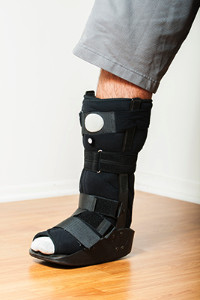 Research has shown the foot consists of 26 bones. If you have endured a fall resulting in severe pain in your foot, one of these bones may have been fractured, and this is often referred to as a broken foot. General symptoms of a sprain and a fracture typically include swelling and pain, so it’s advised to be able to differentiate between the two. This can be accomplished by comparing both feet and looking for breaks in the skin, which may result from a broken bone. Additional indications of a broken foot may be a feeling of dizziness, extreme discomfort, and pain while attempting to walk, or feeling a bone in the foot snap as the injury occurs. Temporary relief can be found in resting the foot by limiting attempts to walk, in addition to elevating the leg as soon as possible. A proper diagnosis will typically consist of performing an X-ray, which can determine the severity of the fracture. Please consult with a podiatrist for proper treatment options, which may include a walking boot or cast.
Research has shown the foot consists of 26 bones. If you have endured a fall resulting in severe pain in your foot, one of these bones may have been fractured, and this is often referred to as a broken foot. General symptoms of a sprain and a fracture typically include swelling and pain, so it’s advised to be able to differentiate between the two. This can be accomplished by comparing both feet and looking for breaks in the skin, which may result from a broken bone. Additional indications of a broken foot may be a feeling of dizziness, extreme discomfort, and pain while attempting to walk, or feeling a bone in the foot snap as the injury occurs. Temporary relief can be found in resting the foot by limiting attempts to walk, in addition to elevating the leg as soon as possible. A proper diagnosis will typically consist of performing an X-ray, which can determine the severity of the fracture. Please consult with a podiatrist for proper treatment options, which may include a walking boot or cast.
A broken foot requires immediate medical attention and treatment. If you need your feet checked, contact Dr. Dean D. Hinners from Illinois. Our doctor can provide the care you need to keep you pain-free and on your feet.
Broken Foot Causes, Symptoms, and Treatment
A broken foot is caused by one of the bones in the foot typically breaking when bended, crushed, or stretched beyond its natural capabilities. Usually the location of the fracture indicates how the break occurred, whether it was through an object, fall, or any other type of injury.
Common Symptoms of Broken Feet:
- Bruising
- Pain
- Redness
- Swelling
- Blue in color
- Numbness
- Cold
- Misshapen
- Cuts
- Deformities
Those that suspect they have a broken foot shoot seek urgent medical attention where a medical professional could diagnose the severity.
Treatment for broken bones varies depending on the cause, severity and location. Some will require the use of splints, casts or crutches while others could even involve surgery to repair the broken bones. Personal care includes the use of ice and keeping the foot stabilized and elevated.
If you have any questions please feel free to contact one of our offices located in Metropolis and Eldorado, IL . We offer the newest diagnostic and treatment technologies for all your foot and ankle needs.



